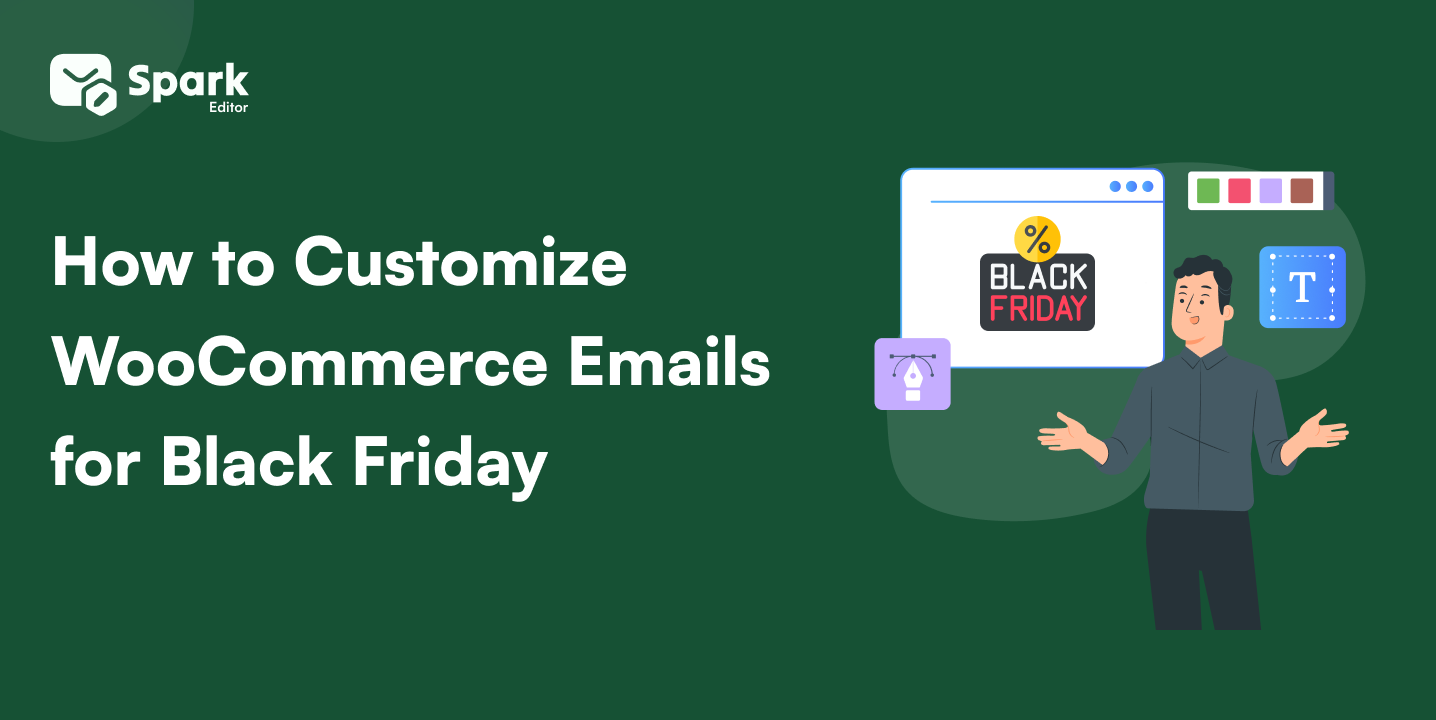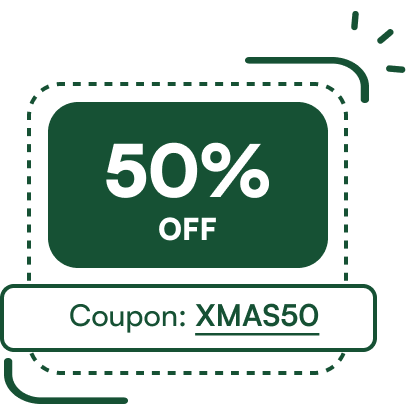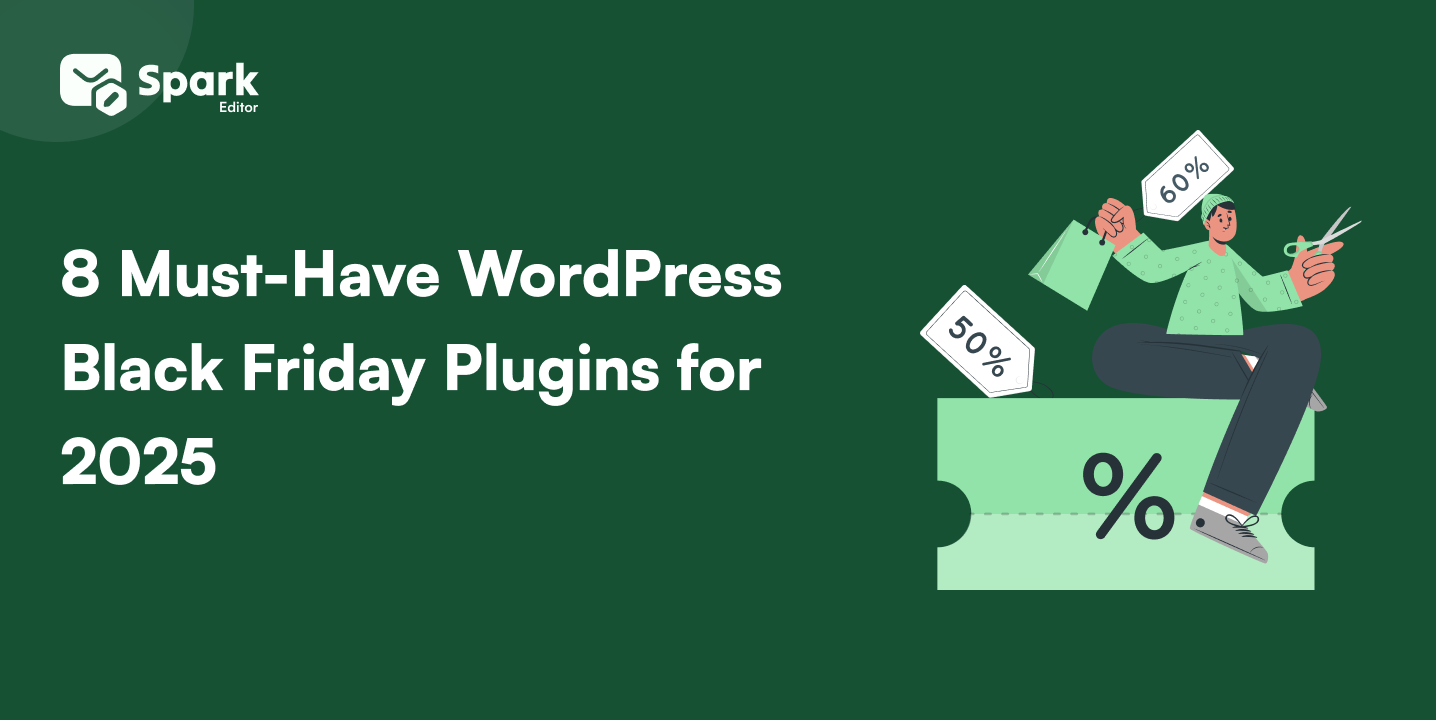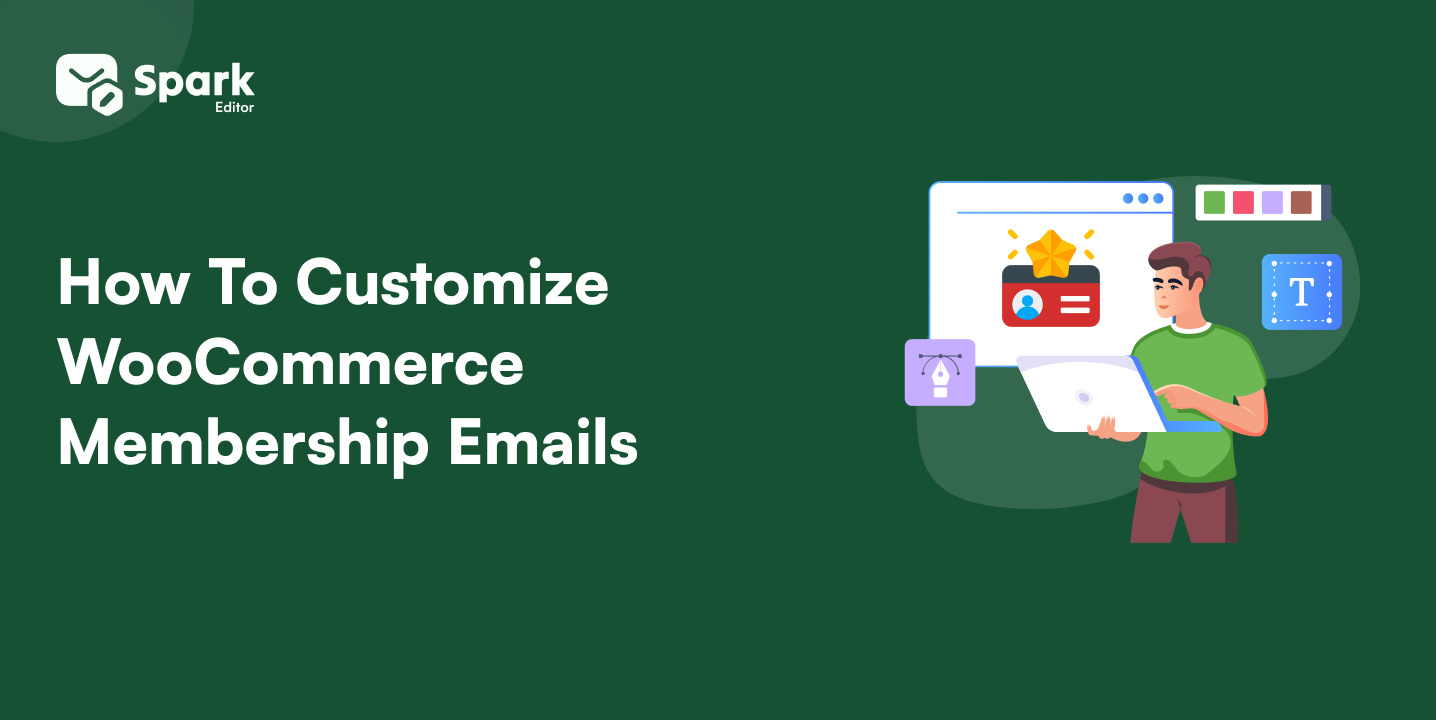Are your WooCommerce emails failing to leave a lasting impression and truly connect with your customers?
In the crowded eCommerce landscape, relying on generic, one-size-fits-all email templates can hinder your brand’s ability to engage and retain customers.
A WooCommerce email editor could be the game-changer you need to personalize and elevate your email communications, ensuring they reflect your brand’s identity and resonate with your audience.
This full guide will walk you through the features, and benefits of WooCommerce email editor and the best practices of WooCommerce email customization.
Without beating around the bush, let’s jump right in!
Design, personalize, and convert – Try Spark Email Editor now!
Why Use a WooCommerce Email Editor?
Email customization is vital in today’s eCommerce environment. Generic emails may fulfill basic communication needs but do little to engage customers or foster brand loyalty.
By using a WooCommerce email editor, you can tailor every email to reflect your brand’s personality, ensuring that each communication is impactful and resonates with your audience.
Factors To Consider
When selecting a WooCommerce email editor, there are several key factors to consider to ensure you choose the right tool for your needs. Here’s a detailed breakdown,
Ease of Use
- A user-friendly interface should allow you to design and customize emails without needing to dig through complex menus or deal with a steep learning curve.
- The editor should offer clear instructions, tooltips, and a straightforward layout that makes the design process seamless.
- Whether you’re a seasoned developer or a complete novice, the tool should cater to varying levels of expertise, keeping things simple for those new to email customization.
Customization Options
- The editor should provide a wide range of customization options, allowing you to tailor the email templates to match your brand’s tone.
- This includes the ability to change colors, fonts, layouts, and more. Look for an editor that offers customizable blocks, widgets, and elements that can be easily adjusted to suit your needs.
- The editor should allow you to incorporate your brand’s logos, color schemes, and unique style into your emails seamlessly.
Responsive Design
- With a significant number of users accessing emails on mobile devices, it’s vital that the email editor ensures your designs are fully responsive.
- This means that emails should automatically adjust and look great on screens of all sizes, from smartphones to tablets and desktops.
- A good email editor should ensure that emails display correctly across various email clients (e.g., Gmail, Outlook, Apple Mail).
Want to create visually appealing emails that adapt to all devices? Creating High-Impact Responsive WooCommerce Emails offers tips to optimize your email designs for maximum impact.
Integration
- The editor must integrate seamlessly with WooCommerce templates, allowing you to easily customize transactional emails like order confirmations and shipping updates.
- This integration should also extend to other WooCommerce-compatible plugins.
- Consider how well the email editor works with other essential plugins, such as those for customer relationship management (CRM), marketing automation, or analytics.
Template Library
- A robust template library is crucial, offering a wide selection of pre-designed templates tailored to different purposes.
- This saves time and ensures that your emails start with a professional design, which you can then customize to fit your brand.
- Look for an editor that allows you to save customized templates for future use, ensuring consistency across your campaigns.
By evaluating these factors, you can select a WooCommerce email editor that not only meets your current needs but also supports your long-term business goals.
Pros of using a WooCommerce Email Editor
A dedicated WooCommerce email editor provides the tools needed to create visually appealing, personalized emails without requiring coding skills.
This capability not only saves time but also ensures that your emails maintain a consistent look and feel, enhancing the overall customer experience. Key benefits include,
- Consistency: Maintain brand consistency across all customer communications.
- Efficiency: Quickly design and deploy customized emails.
- Personalization: Easily add personalized elements like customer names and more.
- User-Friendly: No coding is required, making it accessible to users of all skill levels.
5 Key Features of WooCommerce Email Editors
Visual Editing Capabilities
- One of the standout features of a WooCommerce email editor is its visual editing capabilities.
- These tools allow you to see changes in real-time, ensuring your emails look exactly how you want them before they reach your customers.
- This intuitive visual interface simplifies the design process, allowing you to focus on creativity without worrying about complex coding or formatting issues.
Drag-and-Drop Functionality
- Most WooCommerce email editors offer drag-and-drop functionality, allowing you to easily move elements like text blocks, images, and buttons into place.
- This feature is ideal for non-technical users, enabling them to create professional-looking emails with ease.
- You can achieve a polished email design without the need to learn complex coding or design skills, making customization accessible to everyone.
Responsive Email Design
- With an increasing number of customers checking emails on mobile devices, responsive design is crucial.
- A good WooCommerce email editor ensures that your designs automatically adjust to fit any screen size, providing a seamless experience for all users.
- This adaptability helps ensure that your message is effectively communicated, regardless of how your customers view their emails.
Customization Options for Branding
- Branding is a critical aspect of any email communication strategy.
- Customizable templates make it easy to maintain brand consistency while still allowing flexibility in design.
- WooCommerce email editors allow you to incorporate your brand’s colors, fonts, and logos into your emails, helping to reinforce your brand identity with every message.
Integration with WooCommerce Templates
- WooCommerce email editors are designed to work seamlessly with the platform’s built-in templates
- It allows you to easily customize transactional emails such as order cancelled, order refunded and more.
- This integration ensures that all your emails, whether promotional or transactional, adhere to your brand guidelines and provide a consistent customer experience.
How to Use a WooCommerce Email Editor?
Using a WooCommerce email editor is straightforward, even for beginners. Here’s a step-by-step guide to editing emails,
- Select a Template: Start by choosing a template that aligns with your brand’s aesthetic. Most editors offer a range of pre-designed templates that can be easily customized.
- Customize the Design: Use the drag-and-drop editor to adjust the design, add images, and insert text. Personalize the content with dynamic elements like customer names and more.
- Preview Your Email: Before sending, preview your email to ensure it looks great on all devices. This step is crucial to catch any design issues or formatting errors.
- Send Test Emails: Use the test email feature to see how your email appears in different email clients. This helps ensure consistent performance across various platforms.
- Deploy: Once satisfied with the design, set your email live and start engaging with your customers.
Tips for Beginners and Non-Coders
If you’re new to email customization, don’t worry. WooCommerce email editors are designed to be user-friendly, with intuitive interfaces that make it easy to create professional-looking emails without any technical skills.
Here are a few tips to get started,
- Start Simple: Begin with a basic template and gradually add more elements as you become more comfortable with the editor.
- Use Pre-Designed Templates: Take advantage of the pre-designed templates to save time and ensure a polished look.
- Preview Frequently: Regularly preview your email as you edit to catch any issues early.
Ready to make your WooCommerce emails stand out? Get started today with our video tutorials to create custom emails that build lasting connections with your customers.
Best Practices for WooCommerce Email Customization
- With more customers accessing their emails on mobile devices, it’s critical to ensure your emails are mobile-friendly.
- Use the responsive design features in your email editor to create emails that look great on any screen size.
- This ensures that your content is accessible and engaging, regardless of how it’s viewed.
- Design plays a significant role in how your emails are received.
- High-quality images, clear calls-to-action, and consistent branding are essential elements that contribute to higher engagement rates.
- Focus on creating a clean, easy-to-read layout that guides the recipient toward the desired action, whether it’s clicking a link, making a purchase, or sharing the email with others.
Common Mistakes to Avoid
While customizing your WooCommerce emails, it’s important to avoid common pitfalls that can detract from their effectiveness:
- Overcomplicating the Design: Stick to simple, clean layouts that are easy to read. Too many elements can overwhelm the recipient and dilute your message.
- Neglecting to Test Across Devices: Always test your emails across different email clients and devices to ensure they display correctly. Inconsistent performance can lead to a poor user experience.
- Ignoring Accessibility: Ensure that your emails are accessible to all users, including those with disabilities. This includes using alt text for images, ensuring sufficient color contrast, and choosing readable fonts.
Top WooCommerce Email Editors (Compared)
There are several WooCommerce email editors available, each offering a range of features tailored to different needs. Some of the most popular options include,
- Spark Editor: Provides advanced customization tools, including WooCommerce-specific elements.
- YayMail : WooCommerce Email Customizer: Known for its intuitive drag-and-drop interface and real-time previews.
- Kadence WooCommerce Email Designer: Offers a range of pre-built templates and easy customization options.
You can opt for any of the above-mentioned extensions based on your business needs.
Maximize conversions with advanced email features – Explore Spark Email Editor!
Conclusion
Boost your sales and customer engagement with WooCommerce Email Editors that offer seamless customization and advanced design tools. Elevate your brand’s identity, create stunning emails, and drive more conversions effortlessly.
Don’t settle for generic emails—make every message count with professional, responsive designs.
Frequently Asked Questions
What types of emails can I customize with the WooCommerce email editor? You can customize various types of emails, including transactional emails and notification emails sent to store administrators. Additionally, you can create custom email notifications for specific events, enhancing customer engagement and communication
Can I add images and buttons to my WooCommerce emails? Yes, using the Spark Editor plugin, you can add images, buttons, and various text elements to your email templates. This allows for a more engaging and branded email experience
Is coding knowledge required to customize WooCommerce emails? No, you do not need coding knowledge to customize WooCommerce emails. Spark Editor offers drag-and-drop editors that allow you to customize email templates visually without any coding skills.
How can I test my customized WooCommerce email templates? You can test your customized email templates by sending a test email to yourself or a designated email address. Most customization plugins provide an option to preview and send test emails to ensure everything appears as intended before sending them to customers
What variables can I use to personalize the email content? Common variables used for personalization include {{customer.first_name}}, {{{order.id}}, {{order.total_price}} and more. These allow you to dynamically insert customer names, order details, and other relevant information into the email content.





